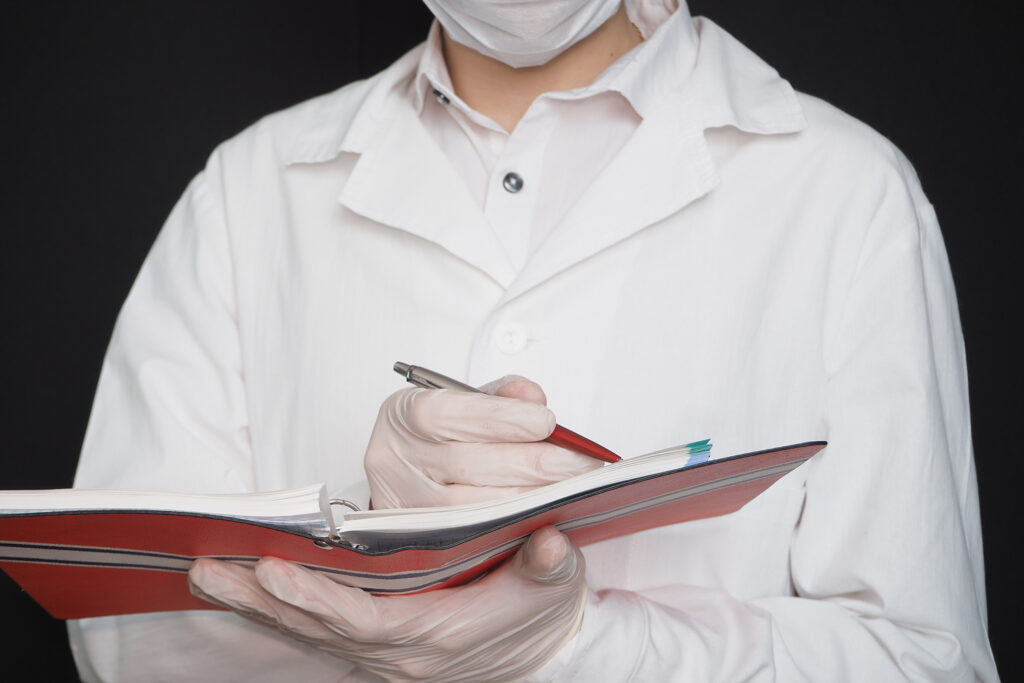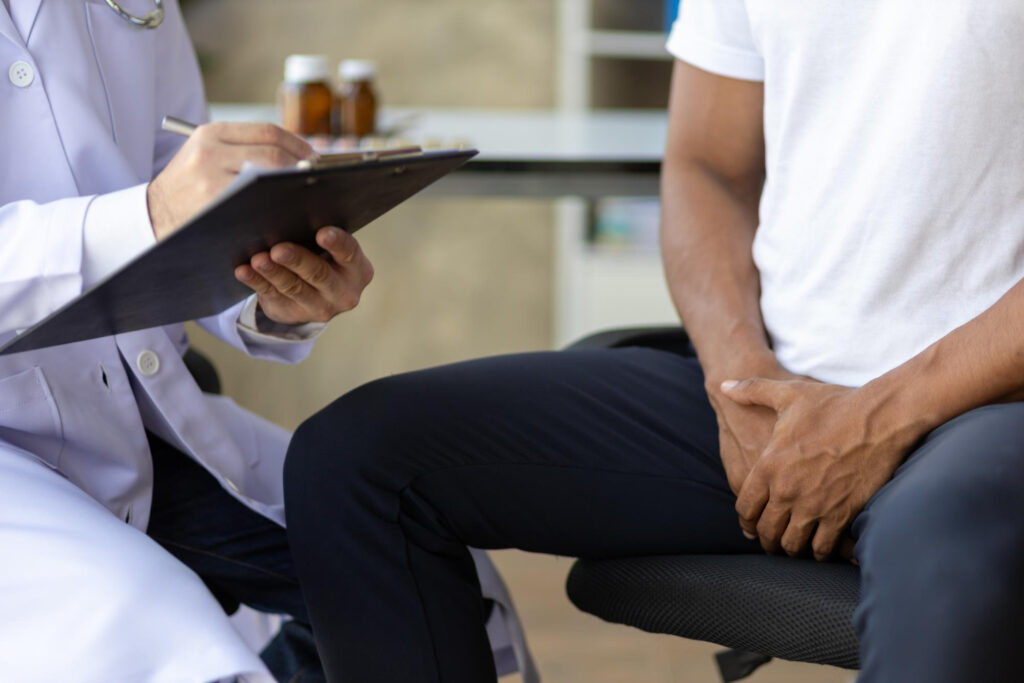In recent years, a question has increasingly surfaced in online forums, private conversations, and especially in Google searches: Can porn cause erectile dysfunction? This seemingly simple question hides a complex reality that touches the intimate lives of many men, particularly those under 40.
If you’re here, it’s likely that you or your partner are experiencing a gap between sexual desire and performance, noticing a growing difficulty in achieving or maintaining an erection in real-life situations, despite full functionality during solo masturbation with pornographic material.
You are not alone. This phenomenon, known as porn-induced erectile dysfunction (PIED), is not media fiction, but an emerging clinical condition that deserves serious, scientific, and non-moralistic analysis. As a Consultant Urologist & Andrologist in London with a specific focus on male sexual dysfunction, my goal is to clarify.
In this article, we will analyze scientific evidence, explore the neuro-psychological mechanisms involved, and most importantly, outline a concrete path to regaining satisfying and spontaneous sexuality.
Can Porn Cause Erectile Dysfunction? First, What Is Erectile Dysfunction? A Quick Overview!
Before diving into the link with pornography, it’s essential to understand what erectile dysfunction (ED) is. An erection is a sophisticated neurovascular event: it begins with a sexual stimulus (visual, tactile, psychological) that, via the nervous system, triggers the release of neurotransmitters.
These induce the relaxation of the smooth muscles in the penile corpora cavernosa and penile arteries. The result is a massive influx of blood that fills the erectile tissues, increasing pressure, volume, and rigidity.
Anything that interferes with this chain of events—vascular, neurological, hormonal, or psychological—can cause ED. While organic causes (diabetes, hypertension, heart conditions) are more common in men over 50, in younger men, psychological components often predominate. This is exactly where pornography consumption comes into play.
Porn and the Brain: Dopaminergic Circuits, Tolerance, and Desensitization
Our brain is wired to seek rewards. Sex, like food, activates the dopamine circuit, a neurotransmitter associated with pleasure, motivation, and learning. When we do something pleasurable, the brain releases dopamine, encouraging us to repeat the behavior.
Online Porn Acts Like a “Superstimulus”
It offers an endless variety of scenarios, partners, and sexual acts with novelty and intensity that are unattainable in real life. This constant bombardment of stimuli leads to massive and frequent dopamine release. What Happens Over Time?
- Tolerance (Downregulation): To protect itself from overstimulation, the brain reduces the number of dopamine receptors. As a result, to achieve the same level of arousal, increasingly stronger, newer, or more “extreme” stimuli are needed.
- Desensitization: Real sex—with its imperfections, natural rhythm, and emotional intimacy—starts to feel “boring” or insufficient to trigger an erection. The brain has been conditioned to respond only to digital and unrealistic stimuli.
This process explains why a man may have perfect erections watching videos, but struggle with a real-life partner. It’s not a mechanical problem with the penis but a “short circuit” in the brain.
Can porn cause erectile dysfunction? Talk to Prof. Fabio Castiglione and discover a personalized recovery plan. Call +447830398165 to book your consultation in London.
Epidemiological Data on PIED: A Growing Phenomenon

Although PIED is not yet an official diagnosis in medical manuals like the DSM-5, scientific literature is accumulating significant evidence. Observational studies and clinical reports indicate a direct correlation between increased porn consumption and the incidence of sexual dysfunction in young men.
Men under 30 are particularly at risk, having grown up with unlimited access to high-speed internet. The question “What can cause erectile dysfunction at 30?” often finds a possible answer in these habits. The developing brain is particularly susceptible to neuroplasticity induced by such powerful stimuli, creating an imprint that’s difficult to undo.
Mechanisms of Onset and Typical Symptoms
PIED manifests through a combination of neuro-psychological factors.
- Neuro-psychological conditioning: The brain associates sexual arousal almost exclusively with pornography, detaching it from intimacy, physical touch, and emotional connection with a partner.
- Stimulus escalation and decreased real-life desire: The search for increasingly extreme material to reach orgasm leads to reduced sexual desire (libido) for real interactions.
- Performance anxiety and unrealistic expectations: Porn creates an unreachable model of sexual performance. Men may feel inadequate, fearing they can’t match the “actors” seen on screen, generating anxiety that is itself a powerful erection inhibitor.
Most Common Symptoms Reported by Those Suffering from PIED Include:
- Difficulty achieving or maintaining an erection during intercourse with a partner.
- Normal erections during masturbation with porn.
- Need for specific fantasies or increasingly intense porn to get aroused.
- Prolonged erectile latency (time required to achieve erection).
- Decreased genital sensitivity.
Is It Reversible? Recovery Timelines and the Role of Neuroplasticity

The most important question is: Is erectile dysfunction curable? In the case of PIED, the answer is almost always yes. The brain is a plastic organ capable of forming new connections and “rewiring”. Recovery is an active process requiring time and commitment. How long does it take to recover from erectile dysfunction? Timelines are subjective and vary from a few weeks to several months (on average 3–6 months).
They depend on factors like age, duration of porn use, severity of symptoms, and above all, the effort invested in recovery. The brain’s “rebooting” process is the key to how to cure PIED. It involves re-sensitizing dopamine circuits to real sex and intimacy.
Guidelines to Prevent and Overcome PIED
Many people search online for a “quick fix for ED”, but the truth is there are no magical shortcuts. However, there are effective, evidence-based strategies.
- Digital Detox (Rebooting): The first and essential step is complete abstinence from porn and, in many cases, from masturbation for a defined period (e.g., 30, 60, or 90 days). This allows dopamine receptors to “reset”.
- Mindfulness & Sensate Focus Techniques: These techniques, often guided by a therapist, help shift the focus from performance to sensation. One learns to enjoy physical contact and intimacy without the pressure of erection or penetration, rediscovering the pleasure of the body.
- Exercise and Sleep Hygiene: Regular physical activity improves blood flow, boosts testosterone, and reduces stress. Quality sleep is essential for hormonal balance and neurological recovery.
- Psychological or Sexological Support: Speaking with a professional is crucial. A therapist can help manage performance anxiety, deconstruct unrealistic expectations, and improve communication with the partner.
Can porn cause erectile dysfunction? Talk to Prof. Fabio Castiglione and discover a personalized recovery plan. Call +447830398165 to book your consultation in London.
Prof. Castiglione’s Clinical Pathway in London

When a patient comes to my clinic with symptoms attributable to PIED, my approach is always multidisciplinary and personalized. It all starts with a thorough evaluation!
The diagnostic and therapeutic journey includes several phases:
- Complete Uro-Andrological Assessment: First, we rule out organic causes. This includes a detailed medical history, physical examination, and if necessary, blood tests to evaluate hormones (testosterone, prolactin, etc.) and a dynamic penile Doppler ultrasound to assess vascular function. Sometimes, PIED can mask or coexist with a mild vascular issue amplified by anxiety.
- Psycho-Sexological Consultation: Our multidisciplinary team includes psychology and sexology specialists. This consultation is key to understanding psychological dynamics, the patient’s habits, and the couple’s experience.
- Targeted Therapies: Based on the diagnosis, we build a treatment plan.
- Psychological support: This is almost always the cornerstone of PIED therapy.
- Medications (PDE-5 inhibitors): Drugs like Sildenafil or Tadalafil may be prescribed at low doses and for a limited time. Their purpose isn’t to “cure” PIED, but to break the anxiety cycle: achieving a reliable erection helps restore confidence, easing the “reboot” process.
- Regenerative Therapies (pshocks): In mixed cases, where strong psychological components overlap with mild to moderate vascular dysfunction, innovative therapies can make a real difference. My approach, which I’ve defined as the pshocks, integrates low-intensity shockwaves (Li-ESWT) and penile PRP (platelet-rich plasma). Shockwaves stimulate the formation of new blood vessels (neoangiogenesis), while PRP, drawn from the patient’s own blood, delivers growth factors that regenerate tissues. This protocol not only improves vascular function but also gives the patient a confidence boost, accelerating recovery overall.
Frequently Asked Questions (FAQ)

If you have erectile dysfunction, can you still get an erection?
Yes, absolutely. Many men with ED, especially with PIED, can get erections in certain situations (e.g., upon waking or during masturbation) but not in others (e.g., with a partner). This is often a key indicator of a strong psychogenic component.
How to fix ED?
Fixing ED requires a holistic approach. It begins with an accurate diagnosis from a specialist (urologist/andrologist) to identify the cause (organic, psychogenic, or mixed). Solutions range from lifestyle changes and psychotherapy, to medications, and advanced regenerative therapies like shockwaves and PRP.
What are the PIED testimonials on Reddit (PIED ED Reddit)?
Forums like Reddit are filled with anonymous stories from men who have overcome PIED, mainly through “rebooting”. These stories, while not scientific, are useful because they show recovery is possible and foster a sense of community. However, they should be seen as inspiration, not as a substitute for professional medical diagnosis.
Can porn cause erectile dysfunction? Find the answer and real solution with Prof. Fabio Castiglione. Book your specialist consultation in London by calling +447830398165.
Anonymous Case Study: Marc’s Recovery (32 Years Old)
Marc, a 32-year-old professional, visited my clinic complaining of increasing difficulty having sex with his partner for about a year. He reported normal morning erections and no issues during solo masturbation, which he did daily using porn. The diagnosis was predominantly psychogenic erectile dysfunction (PIED).
Our Process:
- Diagnosis: Hormonal and vascular exams (Doppler ultrasound) came back normal.
- Treatment: We set up a 90-day reboot program, combined with 4 couples’ psycho-sexual counseling sessions. To speed up confidence recovery, we carried out a short course of low-intensity shockwave therapy.
- 6-Month Follow-Up: Marc fully resumed a satisfying sex life. He drastically reduced his porn use, learned to manage anxiety, and experienced intimacy more presently and connectedly. The experience also strengthened his relationship.
Conclusion: A Message of Hope
Clinical and scientific evidence shows a clear interaction between porn and erectile dysfunction, as it powerfully conditions the brain and creates performance anxiety. The good news is that this condition is almost always reversible. If you recognize yourself in this scenario, the most important step is to break the silence and ask for help.
It’s not a sign of weakness—it’s the first step toward healing. A guided path with a specialist team can give you the right tools to take back your sexual health and rediscover real intimacy. If you want a thorough evaluation and a personalized treatment plan, my team and I are here in London. Are you looking for an answer to whether porn can cause erectile dysfunction? Don’t face it alone.


